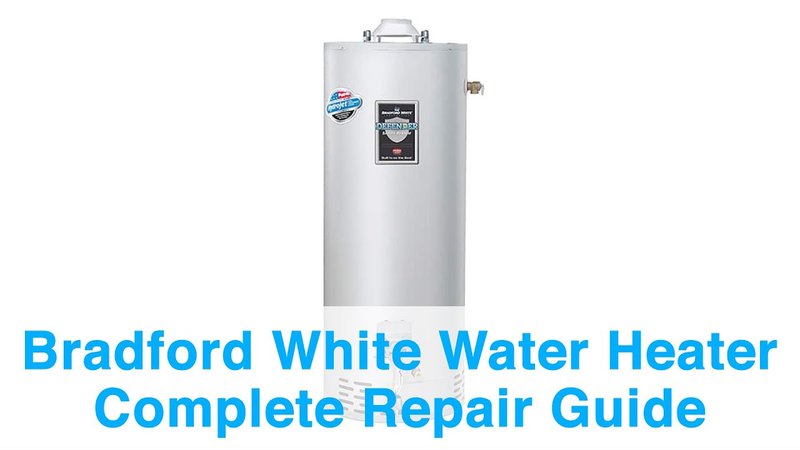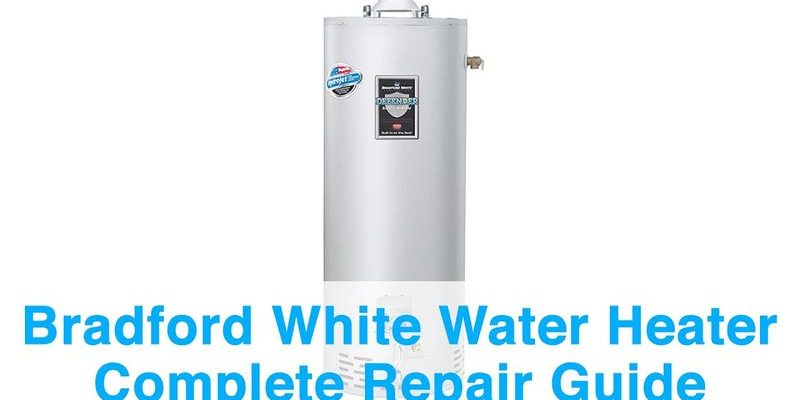
The Error Code E3 on a Bradford White water heater is essentially a signal from your appliance telling you, “Something’s not quite right here.” Think of it like a car’s check engine light that nudges you to pay attention before things potentially take a turn for the worse. This particular code typically points toward an issue with the heater’s temperature sensor, which is a crucial component making sure your water doesn’t become too hot or inadequately warm. A malfunctioning temperature sensor, much like a misbehaving thermostat in your car, can lead to complications if ignored.
Understanding Error Code E3 on Your Water Heater
You might be asking, “So, what exactly does Error Code E3 indicate in my Bradford White water heater?” Simply put, this code points to a temperature sensor problem. This sensor acts as the thermostat’s little helper, continuously checking and ensuring the water temperature remains within a safe range. If the sensor fails to perform its duties, your heater could end up heating water to dangerous levels or not heating at all, akin to a kettle that’s forgotten how to switch off.
Here’s the deal: When the temperature sensor fails, it sends inaccurate readings to the water heater, much like a broken thermometer that can’t tell if you’re running a fever or not. This can cause your heater to deliver scalding water that poses a safety risk or even makes the appliance shut down entirely to avoid further complications. If you’re thinking about safety, this is where you might want to sit up and pay closer attention.
Now, you might wonder if you should ignore this warning and continue using the heater. While it’s possible to still have hot water without immediate mishap, using the heater with this error is like driving a car with a flat tire. It might get you a short distance, but it’s risky and not advisable in the long run. To ensure safety and the longevity of your heater, it’s best to address the issue promptly.
What Causes Error Code E3?
Understanding the underlying issues that lead to Error Code E3 can help you tackle them effectively. One common cause is a faulty or worn-out temperature sensor. Over time, just like an old battery losing its charge, these sensors can deteriorate due to wear and tear, resulting in poor performance. Imagine trying to use a worn-out pen; it might write for a while but eventually stutters, leaving you frustrated.
Another possible cause could be loose or corroded wiring connections. In the same way that a lamp flickers when the plug isn’t seated correctly, your heater’s wires might not be connecting properly, disrupting the signal from the temperature sensor. This can mislead the heater into thinking there’s a problem when it’s really just a connection issue.
Additionally, electrical issues within the heater’s system can play a role in triggering the E3 code. Fluctuations in your home’s power supply, much like inconsistent WiFi signals dropping your online streaming, can affect the heater’s performance, leading to incorrect error signals. Regular maintenance checks can be a good preventative measure to catch these electrical gremlins before they cause trouble.
If you’re experiencing this error, consider reaching out to a professional technician. They can help you identify and resolve the root cause, ensuring your heater runs smoothly and safely. Remember, addressing these issues promptly is a proactive way to prevent future hassles.
Steps to Troubleshoot and Fix the Error
When faced with Error Code E3, don’t panic! There are steps you can take before calling in the cavalry. Begin by doing a simple reset of your water heater. It’s like rebooting your computer when it freezes—sometimes, that’s all it takes to clear up a minor glitch. However, if the code persists, further investigation is necessary.
Firstly, check the sensor connection. Sometimes, the solution might be as simple as tightening a loose connection, similar to plugging in a charger that’s just a bit askew. Ensure there’s no debris or corrosion affecting the connection points. If you’re comfortable with basic DIY maintenance, this step might be within your reach.
If a reset and connection check don’t solve the problem, it could be time to replace the temperature sensor altogether. Think of it as swapping out an old, flickering light bulb for a new one. However, this step usually requires a bit more technical know-how, so if you’re not confident, it’s wise to call a professional.
Keep in mind that water heaters can be complex systems, and while DIY fixes are tempting, they might not always be safe or effective if you’re unfamiliar with the appliance. Always prioritize your safety and, when in doubt, consult an experienced technician to carry out repairs.
Preventative Measures and Final Thoughts
Preventing Error Code E3 from occurring in the first place can save you from future headaches. Regular maintenance is key, much like getting routine oil changes for your car. Scheduling periodic checks with a professional can help catch potential issues, such as deteriorating sensors or loose connections, before they turn into actual problems.
Additionally, be mindful of your water heater’s environment. Keep it in an area free from excessive dust and humidity, which can affect its components over time. Much like storing a delicate device in a dry, clean place, preserving your heater’s surroundings can contribute to its longevity.
Finally, remember that while a water heater is a steadfast appliance, it still requires a watchful eye and care. By addressing errors like Code E3 swiftly and maintaining the unit diligently, you’ll ensure it continues to provide you with comforting hot water safely. And at the end of the day, isn’t that exactly what we all hope for from our appliances?
